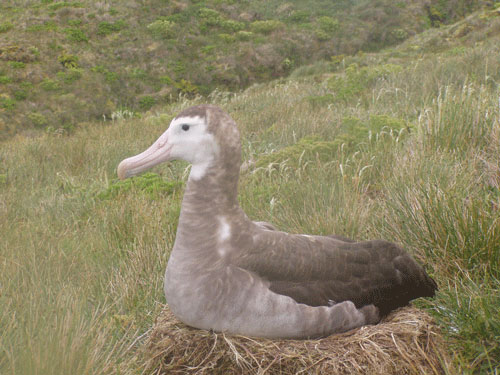Yves Cherel (Centre d'Etudes Biologiques de Chizé, Villiers-en-Bois, France) and colleagues have published in the journal Environmental Pollution on mercury levels in feathers from 20 albatross species.
The paper’s abstract follows:
“Albatrosses (Diomedeidae) are iconic pelagic seabirds whose life-history traits (longevity, high trophic position) put them at risk of high levels of exposure to methylmercury (MeHg), a powerful neurotoxin that threatens humans and wildlife. Here, we report total Hg (THg) concentrations in body feathers from 516 individual albatrosses from 35 populations, including all 20 taxa breeding in the Southern Ocean. Our key finding is that albatrosses constitute the family of birds with the highest levels of contamination by Hg, with mean feather THg concentrations in different populations ranging from moderate (3.8 μg/g) to exceptionally high (34.6 μg/g). Phylogeny had a significant effect on feather THg concentrations, with the mean decreasing in the order Diomedea > Phoebetria > Thalassarche. Unexpectedly, moulting habitats (reflected in feather δ13C values) was the main driver of feather THg concentrations, indicating increasing MeHg exposure with decreasing latitude, from Antarctic to subtropical waters. The role of moulting habitat suggests that the majority of MeHg eliminated into feathers by albatrosses is from recent food intake (income strategy). They thus differ from species that depurate MeHg into feathers that has been accumulated in internal tissues between two successive moults (capital strategy). Since albatrosses are amongst the most threatened families of birds, it is noteworthy that two albatrosses listed as Critical by the World Conservation Union (IUCN) that moult and breed in temperate waters are the most Hg-contaminated species (the Amsterdam and Tristan albatrosses). These data emphasize the urgent need for robust assessment of the impact of Hg contamination on the biology of albatrosses and they document the high MeHg level exposure of wildlife living in the most remote marine areas on Earth.”

A female Tristan Albatross incubates on Gough Island, photograph by John Cooper
Reference:
Cherel Y., Barbraud, C., Lahournat, M., Jaeger, A., Jaquemet, S., Wanless, R.M., Phillips, R.A., Thompson, D.R. & Bustamante, P. 2018. Accumulate or eliminate? Seasonal mercury dynamics in albatrosses, the most contaminated family of birds. Environmental Pollution 241: 124-135.
John Cooper, ACAP Information Officer, 29 June 2018

 English
English  Français
Français  Español
Español